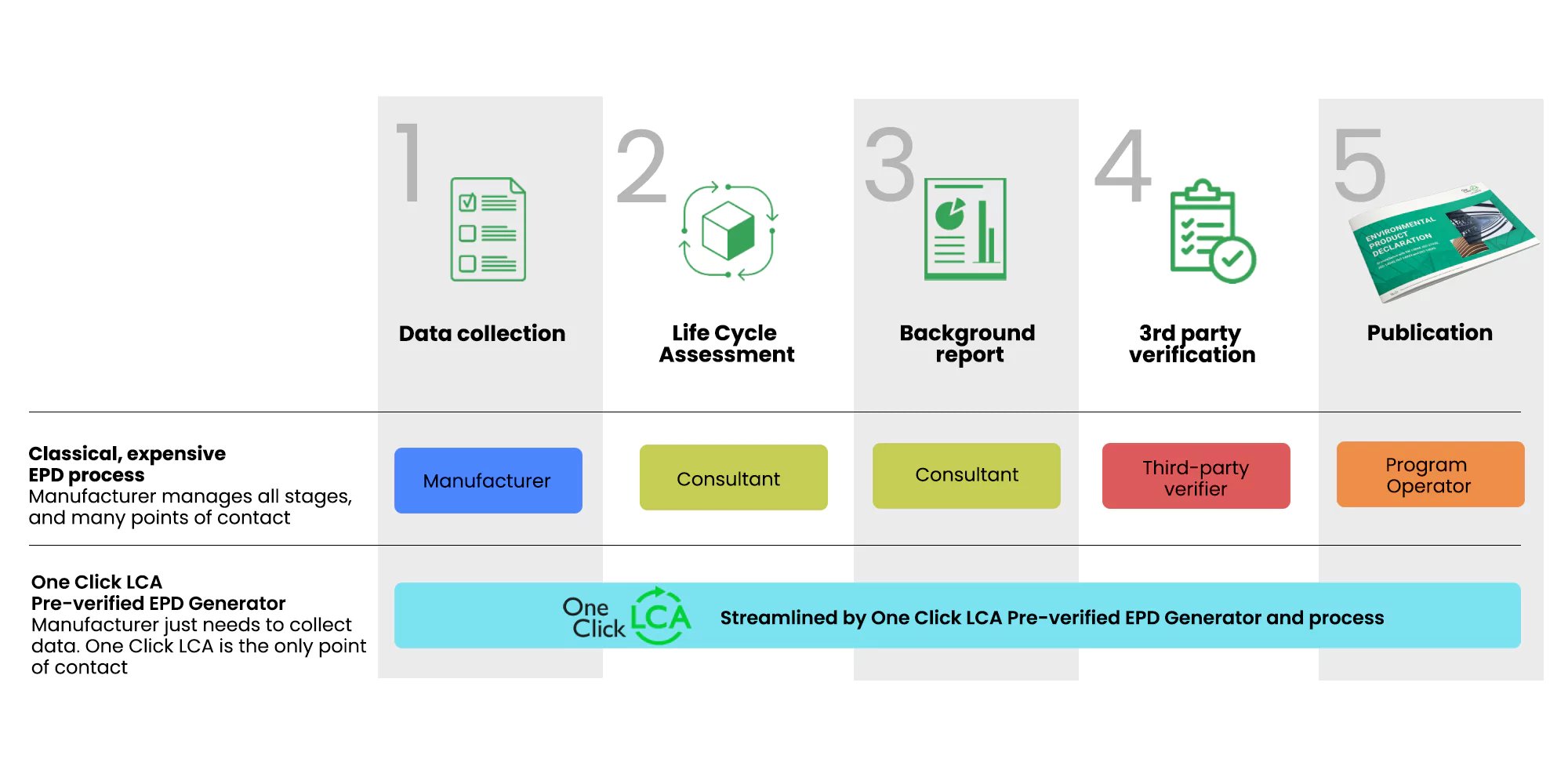.png?width=1840&name=blog%20featured%20image%20(4).png)
We need low carbon construction products to tackle the climate crisis. But is the cost of documenting such products with EPDs a barrier to their uptake? What can we do about it?
When is a product truly green, and not just greenwashing?
Low carbon products can be cheaper, more costly or the same price as their traditional counterparts. Products can be cheaper because of design, energy or raw materials cost. Alternatively, they can require more advanced manufacturing methods which require capital investments. Or they can cost just the same. Product prices are disclosed via a quote. Environmental impacts from third-party verified EPDs. And these cost money to generate, yet are necessary to actually know that product is a green product. Not all products with third-party verified EPDs actually have low carbon impacts; but they all can show their impacts, so you can compare and choose in confidence. To actually know they are green, you need several products to have EPDs so you can compare. After all, why change to a more sustainable product if all you have is the supplier’s unverified claim? A January 2021 European Commission survey found that half of the green claims on manufacturers’ websites lack evidence. Unproven claims are not green building, they are greenwashing.
Unproven claims are not green building, they are greenwashing.
How much do third-party verified EPDs cost?
Back to the costs. An EPD is valid for five years. If you are a typical SME manufacturer, your product catalogue has a few hundred items, but not all sell in large quantities and many are simply variants of each other. We can apply the 80 % – 20 % rule here too, so let’s assume you have 100 articles and 20 of those generate 80 % of your sales (or more interestingly, profits). You will need to document about 20 products to serve the market and stand out.
Let’s further assume that these 20 products consist of four product families, so in fact, you have four product families each with five main products.
To develop an EPD, you need to collect data, get trained on EPDs, calculate their lifetime impacts via a life-cycle assessment (LCA) or hire a consultant to do so, get the resulting reports third party-verified, and publish, and keep paying publishing costs for five years. Which all adds up. According to a recent international survey the cost of EPDs was around $15,000 per EPD. Which is, in our view, too much.
How can these costs be reduced?
The good news is that you only need data you most likely already have: the calculated energy performance of the building and the bill of materials from building models or other sources you are planning to use at the design stage. With One Click LCA, you do not need to be an LCA expert to calculate your LCA. You can simply import your data as it is.
How does the EPD process work?

One way to reduce these costs is via automation. We started developing One Click LCA Pre-Verified EPD Generator with the goal of reducing EPD cost tenfold without sacrificing quality or credibility. We’re still in the middle of the journey, but on track.
How we’re doing this is by developing EPD software that is tailored and pre-verified for different manufacturing segments. We support seven of the biggest construction product manufacturing segments, including steel, concrete, wood, asphalt and many other categories, and are releasing support for more categories over the next months.
Our approach slashes the cost of developing an EPD by reducing the cost of software, cost of training, the complexity of use and cost of EPD verification and EPD publishing. The icing on the cake, we are the single point of contact for you, which cuts the cost of coordination in the complex field of LCA and EPDs for you significantly. And our customer support is excellent.
In purely numerical terms, for a typical SME manufacturer, the cost of documenting a range of products with EPDs using One Click LCA Pre-Verified EPD Generator would cost less than one-thousandth of your profits in that time. For large firms, it’s obviously proportionally far less costly.
It is still not free, but affordable. And most certainly, in the context of green building demand growing, provides a good payback.
But what about large-scale product documentation?
The equation is of course a bit different for example for ready mix concrete or steel fabricators who do many different bids and products. You need EPDs on an ongoing basis. Here we have two solutions for you.
You can either generate “project EPDs“, which are essentially derivatives of your previously published third-party verified EPDs. In the strict sense of ISO 14025, project EPDs do not constitute a third-party verified claim but a self-declared claim as per ISO 14021. (However, we can help to third-party verify project EPDs.) Project EPDs are not published but are suitable for tendering in most countries.
The other solution is sending data directly from One Click LCA to any designer using the platform. The designer will receive the data directly in their One Click LCA account, can use it in the BIM models, and the data is transmitted in a fraction of a second. This way of delivering data is suitable for discussing specification options and for pre-tendering, and in some contexts, also for tendering. One major benefit of this is the time saved in the process.
If you are not sure which option would work best for you, we’re happy to discuss further. Looking forward to your comments!
Carbon Experts Newsletter
Industry news & insights — straight to your inbox
Want to learn more?
Laura Drury • Nov 14 2024
Panu Pasanen • Jan 19 2023
Anna Zahrmann • Nov 14 2023
Aileen Carroll • Feb 26 2025

